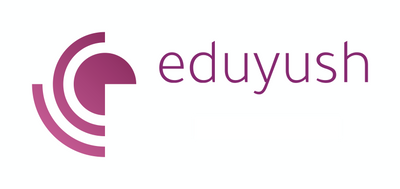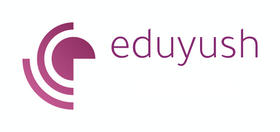Discovering the Full Form of HR: Unveiling the Mystery!
Have you ever wondered what the complete form of HR is? Have you ever wanted to know what HR professionals do? Are you interested in learning about HR's history and the HR professionals' roles and responsibilities? If so, then you've come to the right place!
In this blog, we'll be diving into all things HR,
from
Introduction to HR
Human Resources (HR) is a business function that involves recruiting, training, and managing an organisation's workforce. It is an integral part of any organisation as it ensures that the right people are hired and managed effectively and efficiently. HR also ensures that the organisation's workforce is engaged, motivated, and productive.
What is the Full Form of HR?
The complete form of HR is Human Resources. Human Resources is one of the most critical departments in any organisation and is responsible for the recruitment, training, and management of an organisation's workforce. It is also responsible for ensuring that the organisation's workforce is engaged, motivated, and productive.
What Does HR Do?
Human Resources is responsible for various tasks, including recruitment, training, and managing an organisation's workforce. It is also responsible for ensuring that the organisation's workforce is engaged, motivated, and productive. HR is also responsible for administering benefits and compensation, developing policies and procedures, and addressing employee concerns. The HR reports into the CEO of the Company.
Types of HR Departments
There are several HR departments, including generalist, specialist, and external. We list down some of the critical departments of HR and the roles they play.
Human Resources Management
The full form of HR is Human Resources Management. Human Resources Management (HRM) is managing people to maximise their performance and contribution towards an organisation's success. It is also known as personnel management or personnel administration. HRM is concerned with employee recruitment, selection, training, and development. It also includes designing and implementing policies and procedures related to employee benefits, compensation, and performance management.
HRM plays a crucial role in business strategy and operations. It is responsible for creating and managing an environment that supports the organisation's goals and objectives. HRM is responsible for creating a culture that encourages employee engagement and performance. It is also responsible for providing the necessary resources and support to help employees perform their jobs effectively.
HRM is responsible for the development of human capital. It helps organisations acquire, develop, and retain talented employees. It also helps organisations manage employee relations and maintain a positive work environment. HRM is also responsible for managing employee career development and succession planning.
HRM is also responsible for ensuring compliance with all labour laws and regulations. It is also responsible for maintaining employee records and tracking performance and progress.
Human Resources Planning
Human Resources Planning is another crucial aspect of HR. It involves systematically planning the organisation's human resources to meet its needs and objectives. HR planning involves:
- Analysing the current and future needs of the organisation.
- Determining the skills and competencies needed to meet these needs.
- Developing strategies to meet these needs.
HR planning is essential to ensure that the organisation has the right people in the right roles at the right time. It also helps organisations identify gaps in their workforce and develop strategies to fill them. HR planning also helps organisations identify training and development needs and develop strategies to meet these needs.
Human Resources Development
Human Resources Development (HRD) is another critical component of HR. It involves the development of employees to help them perform their jobs effectively and achieve their career goals. HRD is concerned with the ongoing development of employees to ensure their continued growth and development.
HRD is responsible for providing employees with the knowledge, skills, and abilities needed to perform their jobs and meet their career goals. It includes training, coaching, mentoring, job enrichment, and job rotation. HRD is also responsible for helping employees identify and develop their skills and abilities.
Human Resources Information Systems
Human Resources Information Systems (HRIS) is another component of HR. It is a computer-based system that stores and manages all employee information. HRIS is responsible for storing and tracking employee data such as job titles, job descriptions, pay grades, work schedules, performance reviews, and benefits. It also helps organisations manage employee records and generate reports.
HRIS is also responsible for automating and streamlining various HR processes such as recruitment, onboarding, training, and performance management. It helps organisations save time and money by automating tedious and repetitive tasks.
The Roles of HR Professionals
HR professionals are responsible for various organisational roles, including recruitment, training, and managing an organisation's workforce. They are also responsible for administering benefits and compensation, developing policies and procedures, and addressing employee concerns. Additionally, HR professionals are responsible for developing and implementing strategies to improve employee engagement and motivation.
The Benefits of an HR Department
Having an HR department in an organisation can be beneficial in several ways.
- It can help organisations recruit and retain the most qualified employees, develop policies and procedures that align with their goals and objectives, and ensure that the workforce is engaged, motivated, and productive.
- Additionally, an HR department can reduce employee turnover and minimise the risk of potential legal issues.
- . HR also helps organisations ensure compliance with labour laws and regulations. It also helps organisations create and maintain a positive work environment.
- HR also helps organisations achieve their goals and objectives. It helps organisations identify and develop their human capital and strategies to meet their needs.
- HR helps organisations manage employee relations and identify and develop career paths.
Challenges Faced by HR Professionals
HR professionals face various challenges in their day-to-day work, including a lack of resources, access to the latest technology and tools, and a need for more understanding of the organisation's goals and objectives. Additionally, HR professionals may face difficulty recruiting and retaining the most qualified employees, developing policies and procedures that align with the organisation's goals and objectives, and ensuring that the workforce is engaged, motivated, and productive.
Strategies for Overcoming HR Challenges
To overcome the challenges HR professionals face, organisations should invest in the latest technology and tools and provide training and development opportunities for HR professionals. Additionally, organisations should focus on developing strong communication and interpersonal skills and a strong understanding of the organisation's goals and objectives. Finally, organisations should strive to create a culture of openness and trust, which will help ensure that HR professionals can effectively manage the organisation's workforce.
How to Become an HR Professional
If you are interested in becoming an HR professional, there are a few steps you can take to get started. First, you should gain experience in the field, whether through an internship or a job. It would help if you also considered getting a degree or certification in Human Resources. Additionally, you should develop strong communication and interpersonal skills and a strong understanding of the organisation's goals and objectives.
HR Responsibilities in a Company
HR professionals are responsible for several organisational tasks, including recruitment, training, and managing an organisation's workforce. They are also responsible for administering benefits and compensation, developing policies and procedures, and addressing employee concerns. Additionally, HR professionals are responsible for developing and implementing strategies to improve employee engagement and motivation.
The History of Human Resources
The history of Human Resources can be traced back to the early 1900s when the first personnel departments were established. Since then, HR has continued to evolve and become an integral part of any organisation, as it is responsible for the recruitment, training, and management of an organisation's workforce. HR is also responsible for ensuring that the organisation's workforce is engaged, motivated, and productive.
Summing Up
Now that you've discovered the complete form of HR and better understand what HR professionals do, you can explore the various opportunities available in the field. Whether you're interested in becoming an HR professional or want to learn more about HR, this blog has provided you with the knowledge and resources you need to get started.
Full form Questions? Answers.
A full form is the expansion of a shortened or abbreviated form of a word or phrase. It is the complete version of a word or phrase, written out in its entirety. Full forms are often used to help clarify the meaning of acronyms or initialisms, which are shortened forms of words or phrases that are pronounced as individual letters (e.g., FBI, which stands for Federal Bureau of Investigation). Full forms can also be used to provide more information about a word or phrase, or to distinguish between similar words or phrases that have different meanings. For example, the full form of "FAQ" is "Frequently Asked Questions," and the full form of "URL" is "Uniform Resource Locator."
Yes, you can use full forms in an office setting. In general, it is a good idea to use full forms when you are introducing a new acronym or initialism to your audience, or when the acronym or initialism may be unfamiliar or may be interpreted differently by different people.
However, it is also important to consider your audience and the context when deciding whether to use full forms or acronyms or initialisms, as using full forms too frequently can make text longer and more difficult to read.
There are no hard and fast rules for when to use full forms and when to use acronyms or initialisms. However, it is generally a good idea to use full forms when you are introducing a new acronym or initialism to your audience, or when the acronym or initialism may be unfamiliar or may be interpreted differently by different people.
The best way to use full forms on social media is to use them sparingly and to use acronyms or initialisms whenever possible, while also considering your audience and using formatting to make the full forms easier to read.
Using full forms can improve your writing by providing more context and detail, making your text clearer and more precise, and helping to eliminate confusion or misunderstandings.
The benefits of using full forms in terms of clarity include providing more context and detail about the meaning of a word or phrase, helping to eliminate confusion or misunderstandings, and making written communication more precise.
One benefit of using full forms in terms of organization is that it can help ensure consistency in written communication by specifying the use of full forms for certain acronyms or initialisms. This can help avoid confusion or misunderstandings about the meaning of words or phrases.
Using full forms can improve productivity by saving time spent on reading and understanding abbreviations, and by reducing the risk of confusion or misunderstanding due to different people using different abbreviations.
We list down popular full forms with detailed explanations. Click on the link to read













Leave a comment